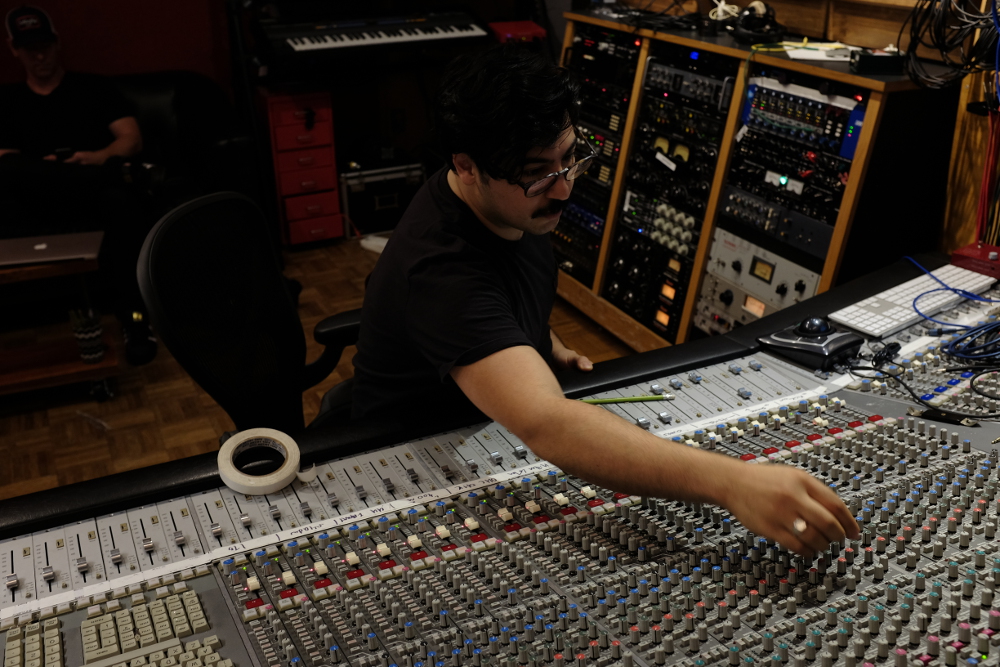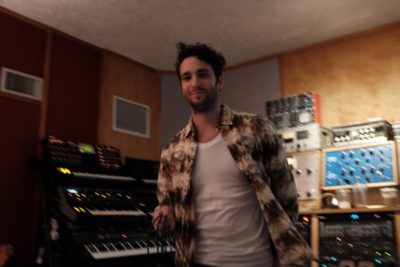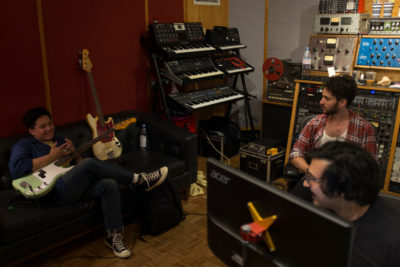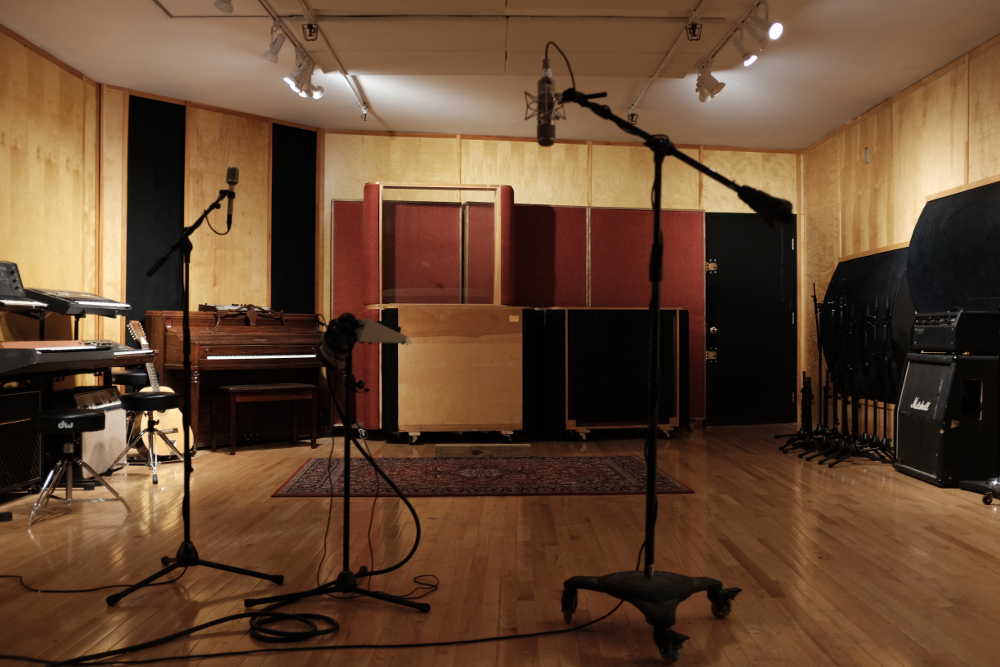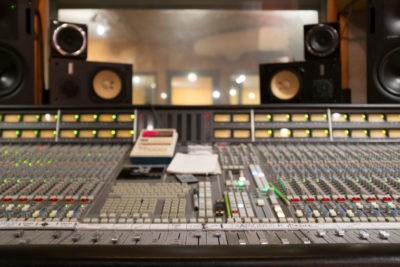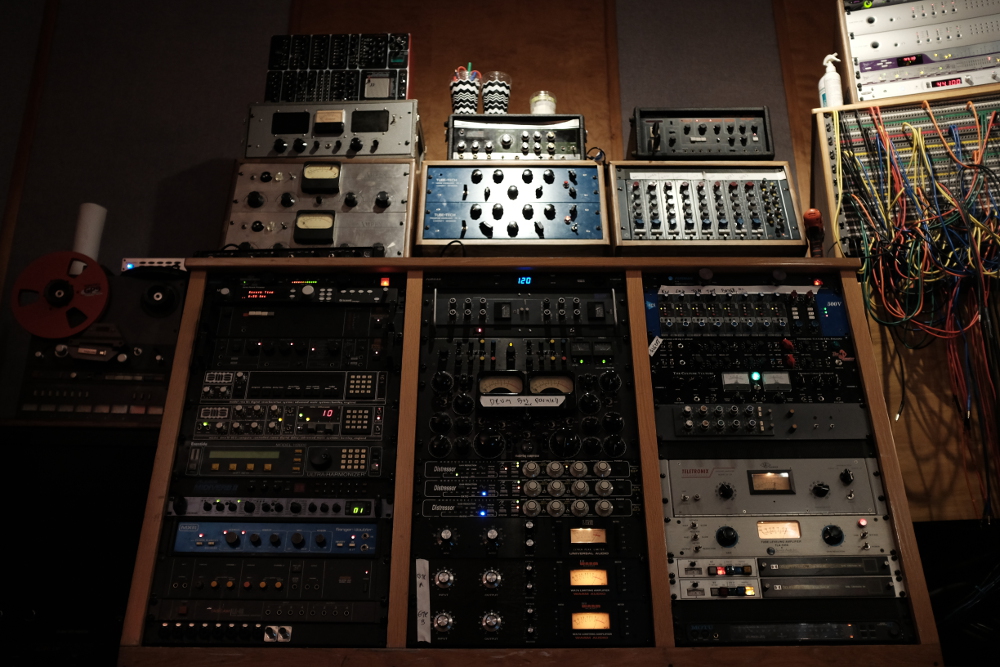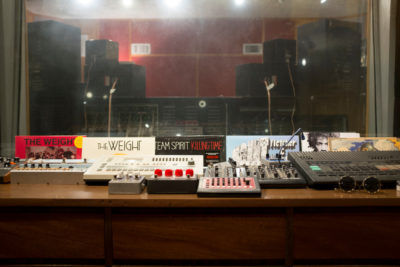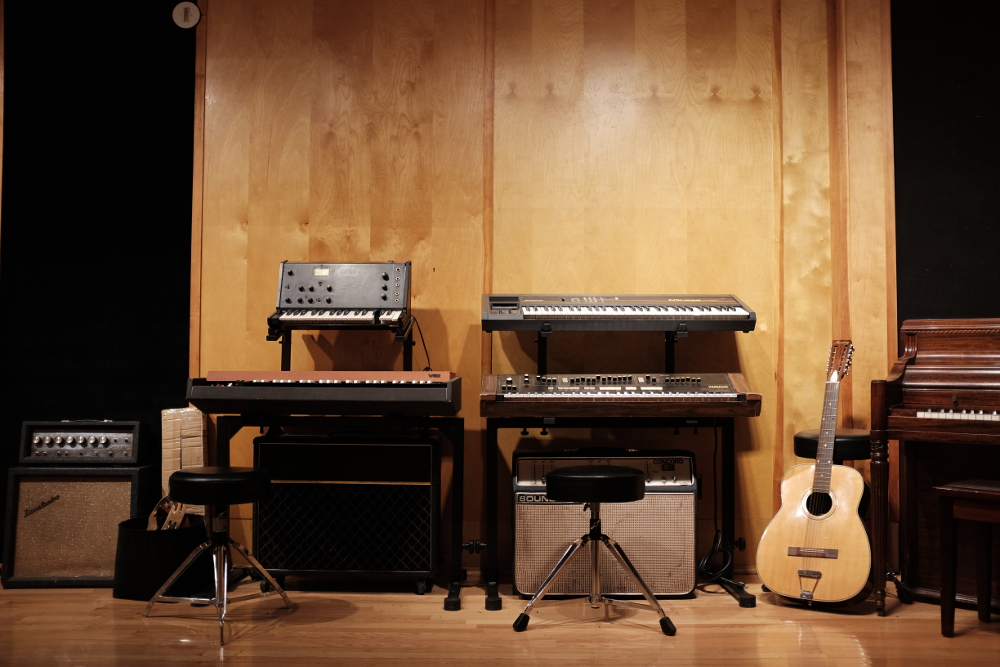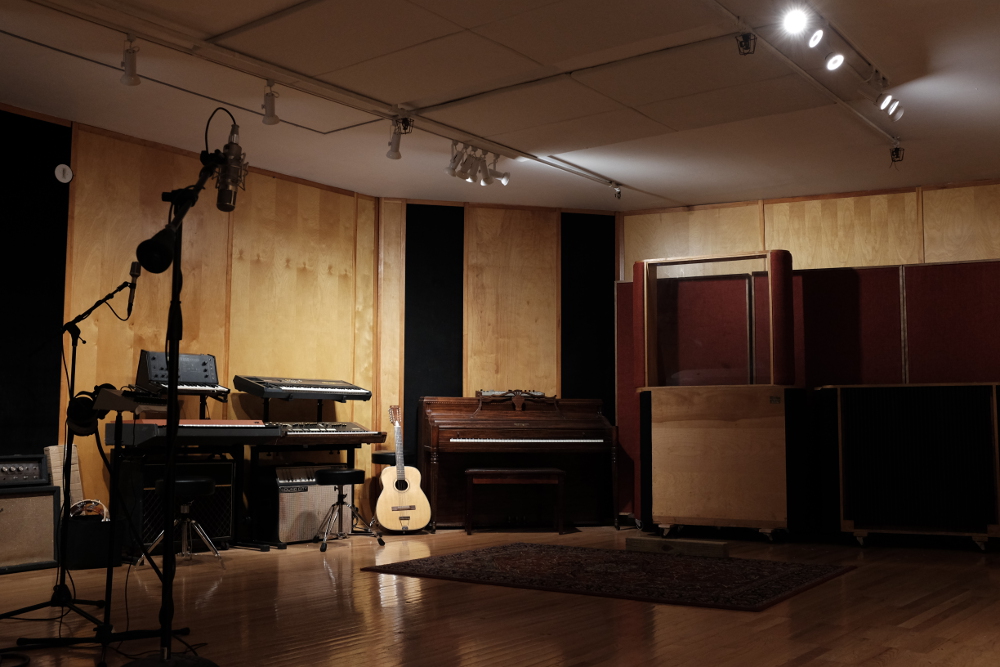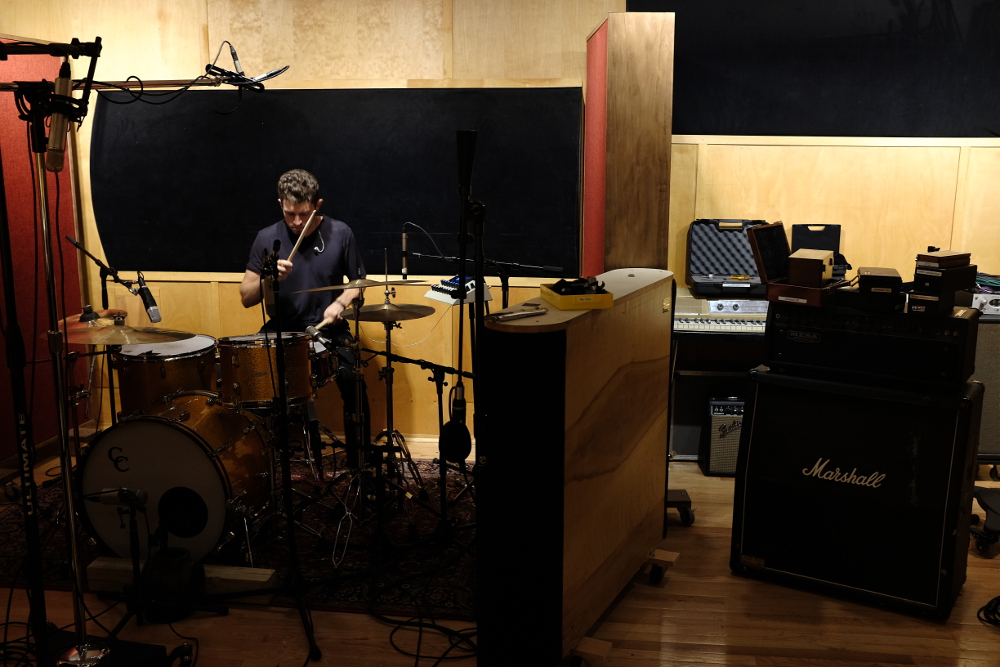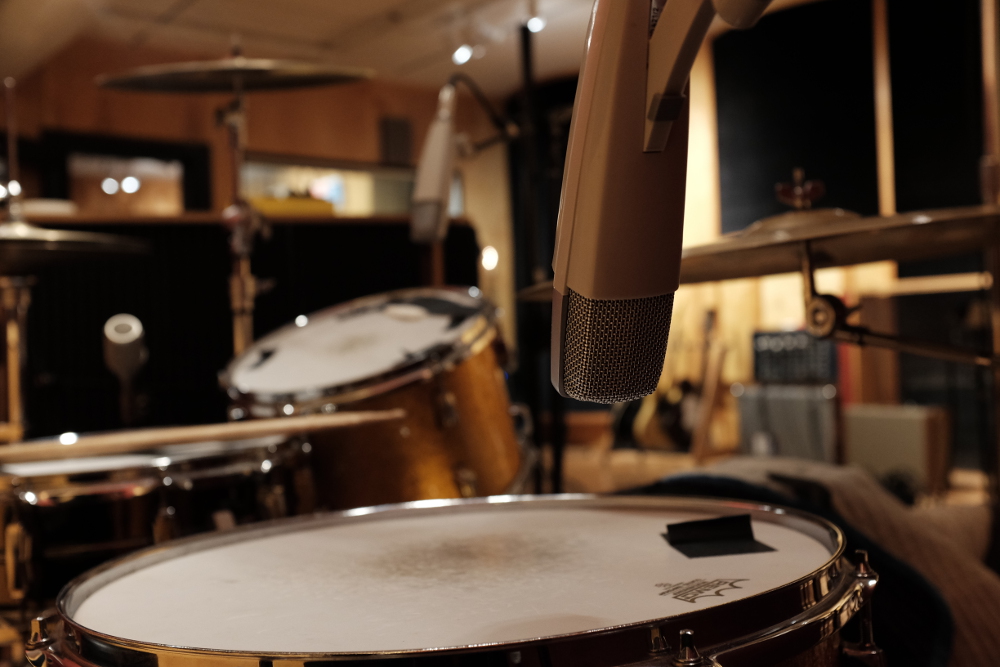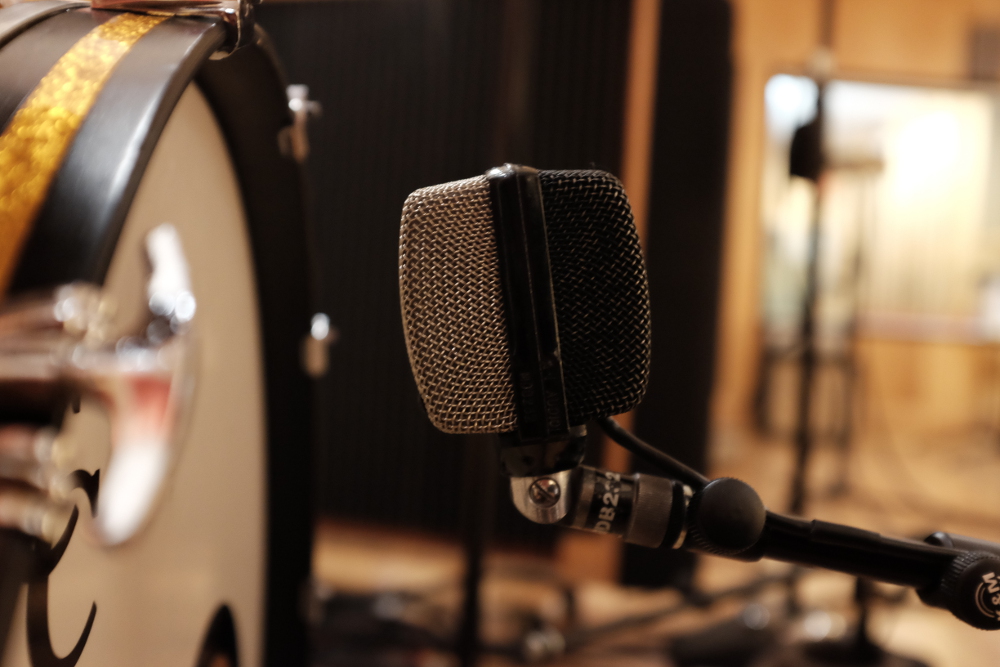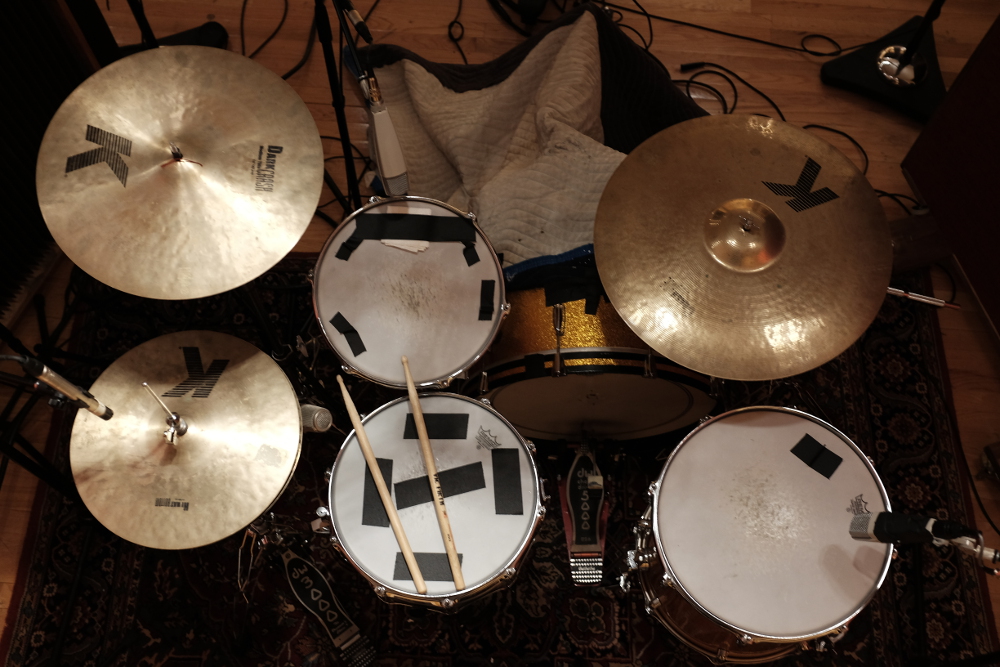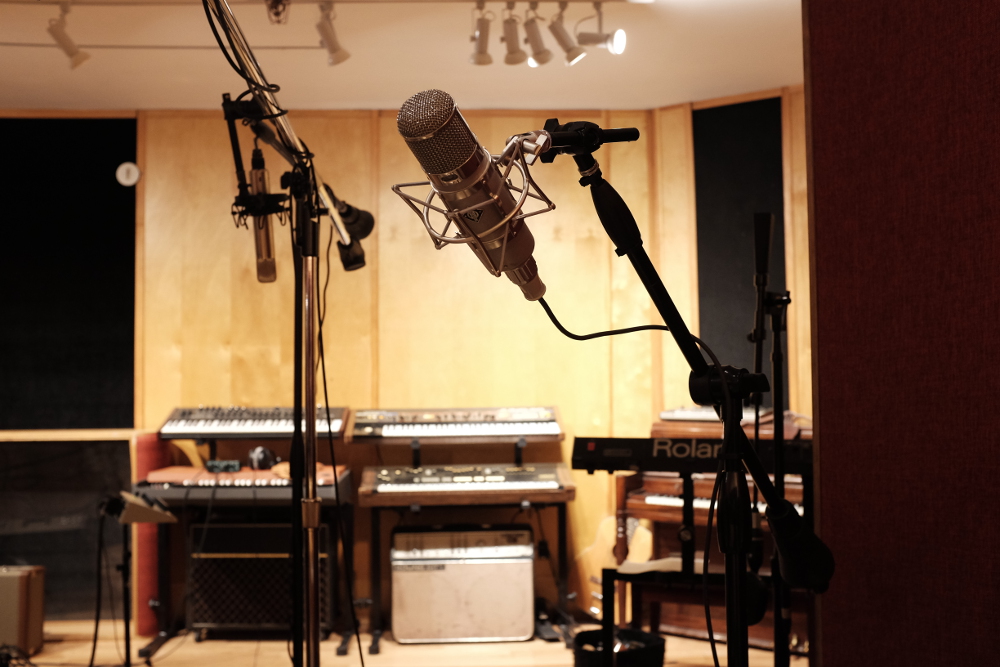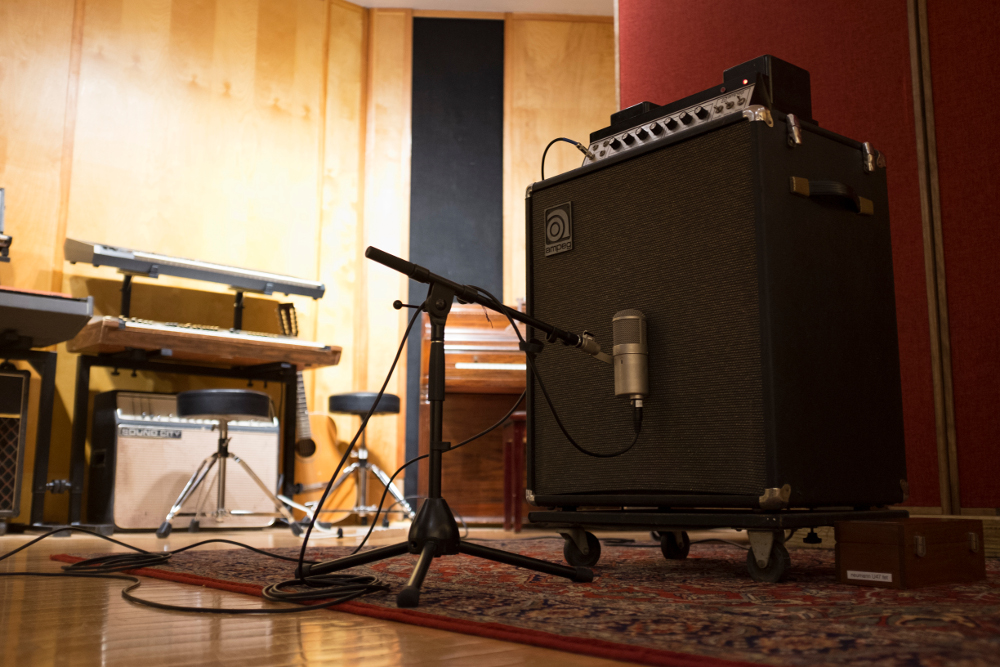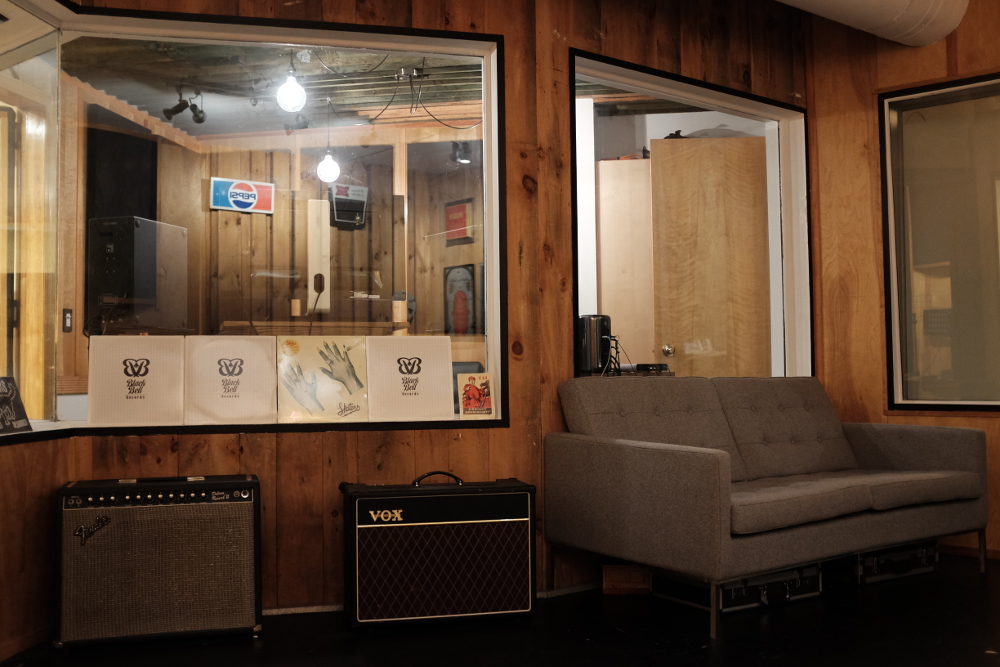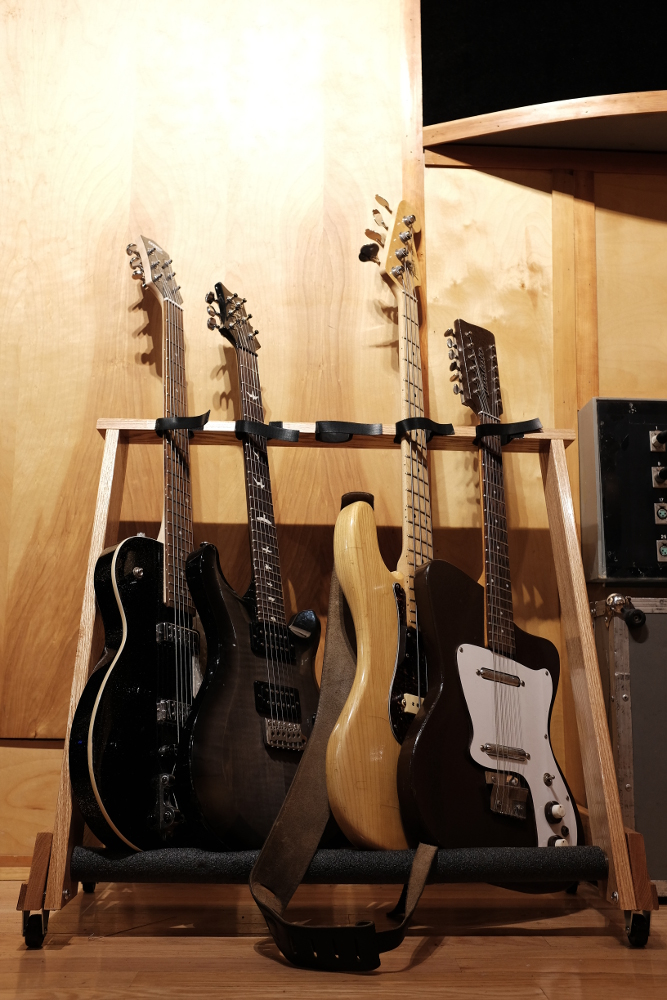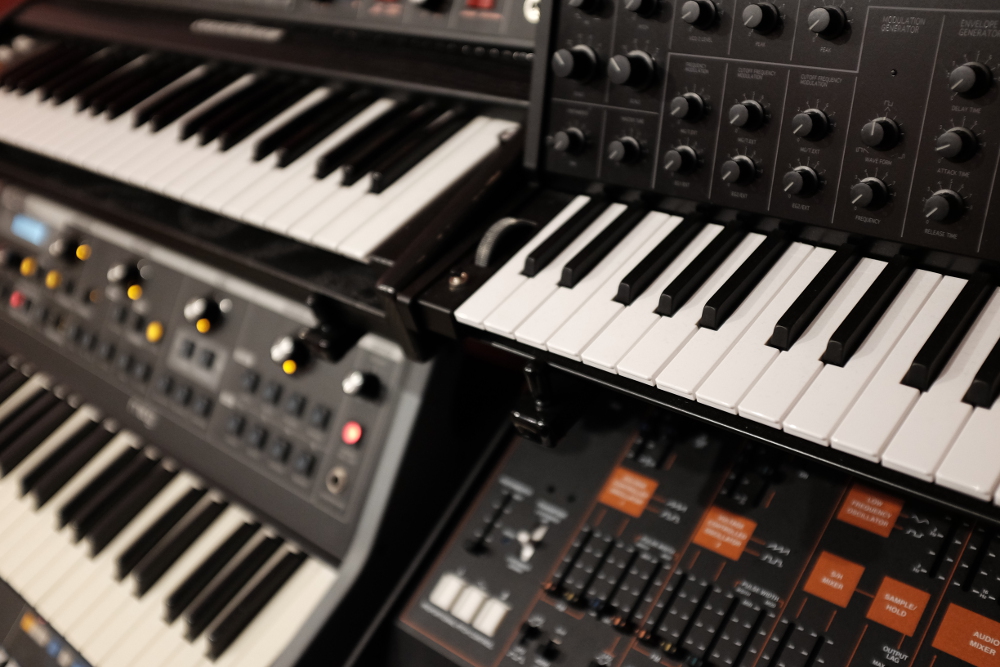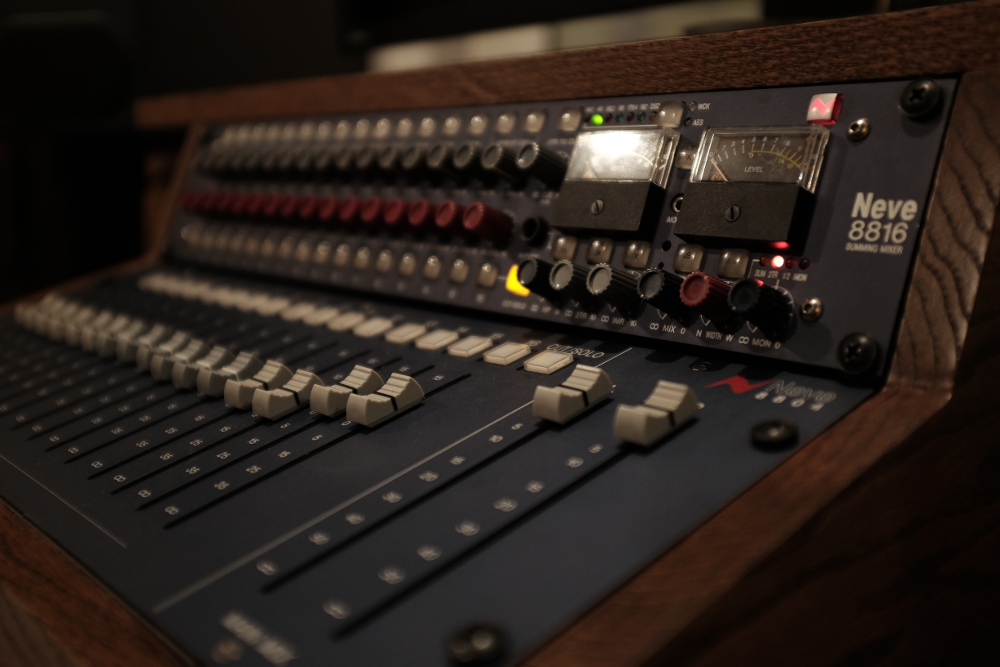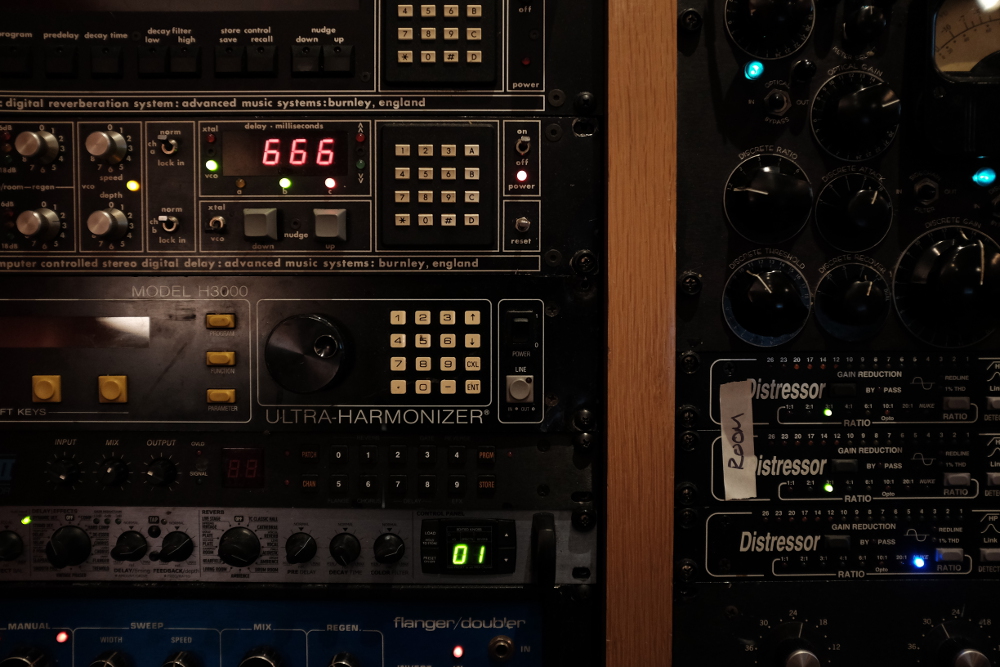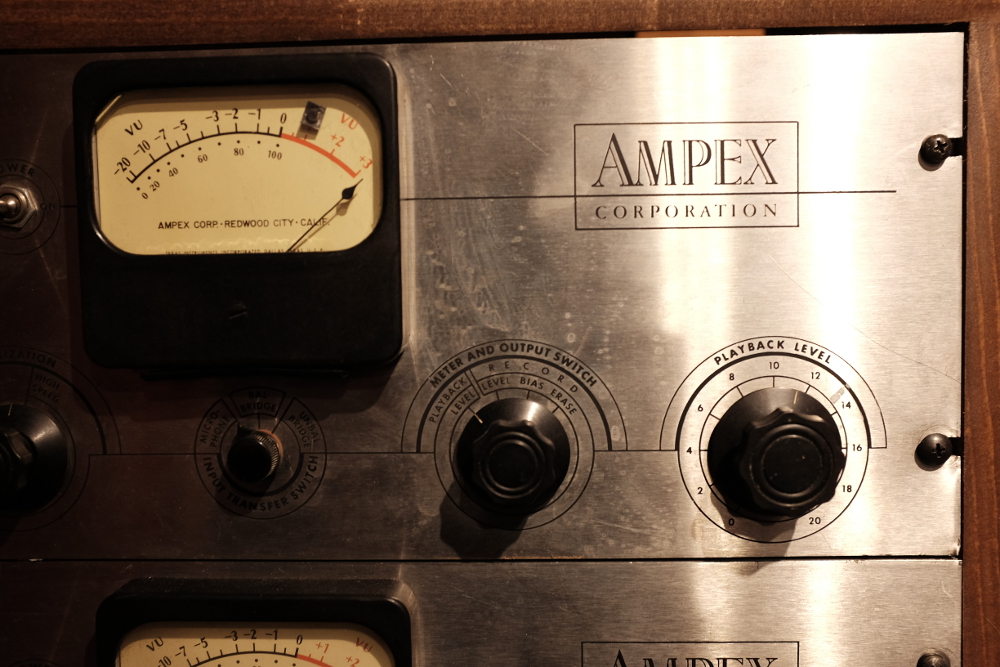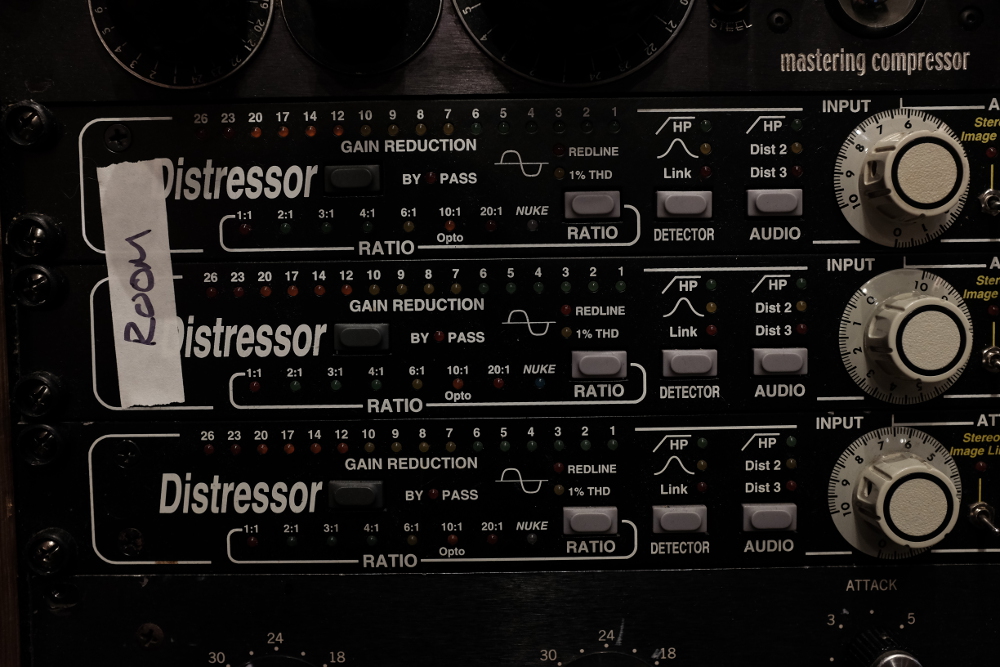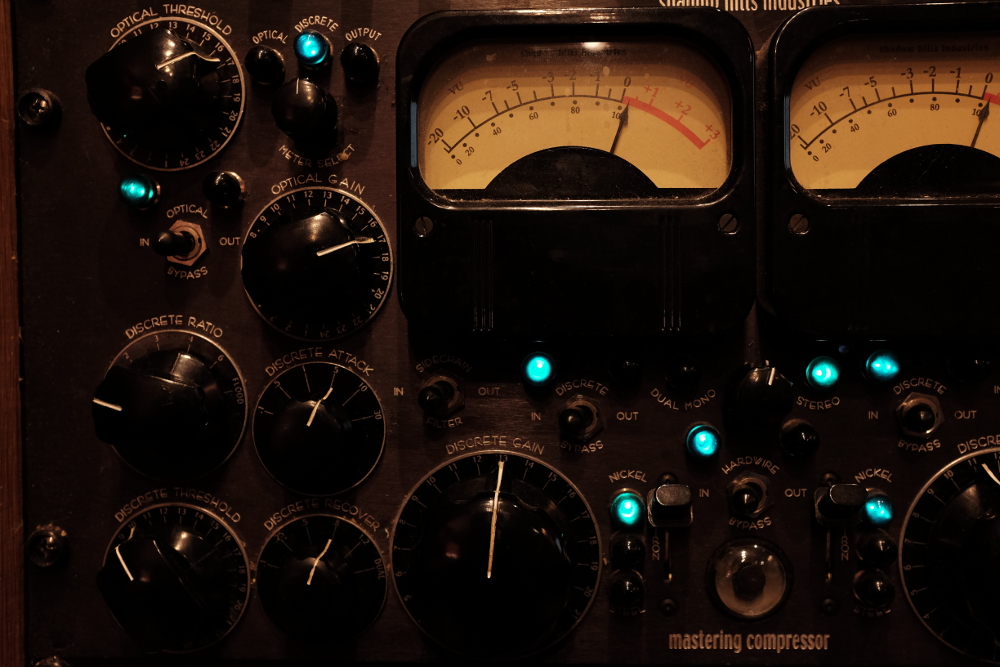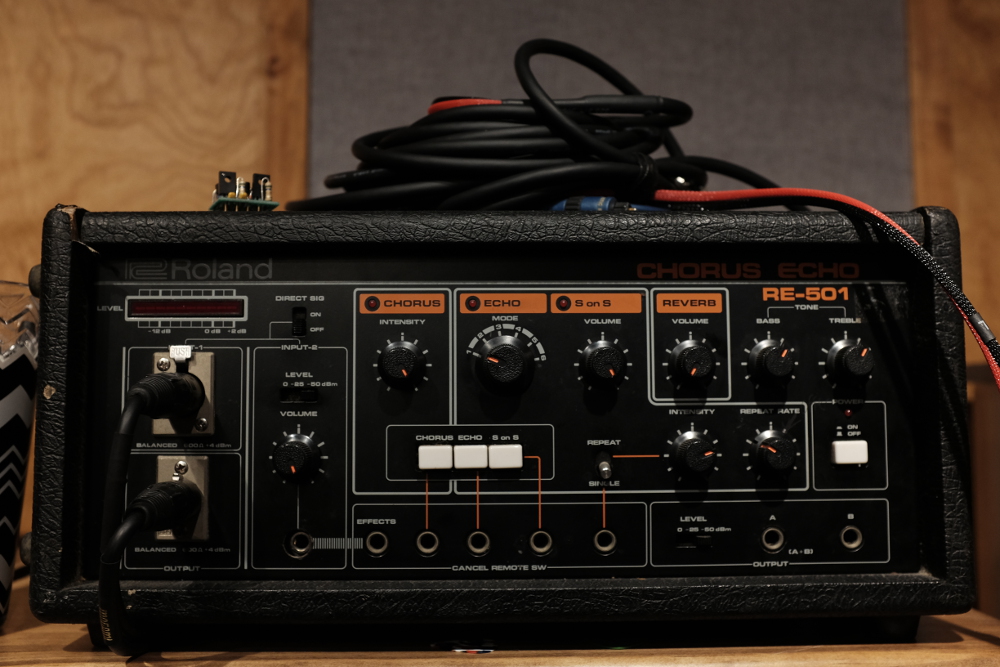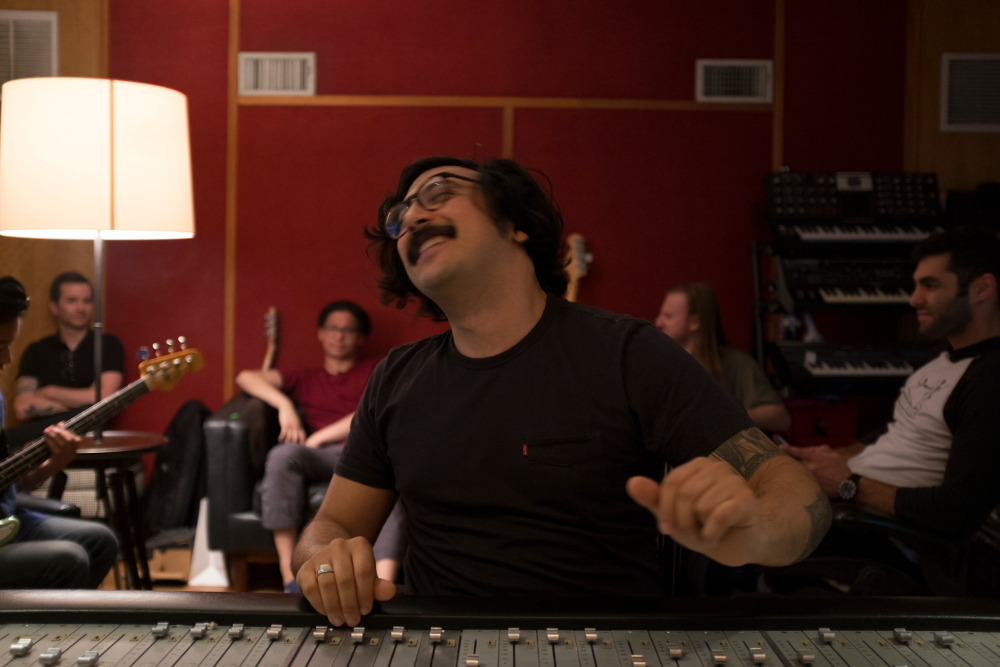Out of Hiding: Diamond City Studio Returns a Secret Facility to NYC
“It’s been a crazy year,” says Ayad Al Adhamy.
It’s easy to understand why he feels that way. 2016 is when Al Adhamy took it all to the next level with the opening of Diamond City Studio in lower Manhattan, enacting a welcome rebirth for a prolific facility that has operated for years outside of the public view.
Once you get familiar with Al Adhamy’s unusual history, it becomes clear why taking over the former Gigantic Studios, which straddles the borders of Chinatown, TriBeCa and SoHo, seems like a natural next move for him. Formerly the synth player for sonic umami purveyors Passion Pit and frontman for Team Spirit, Al Adhamy knows firsthand what artists – not to mention engineers, producers and labels — want from a studio.
With Diamond City, he and partner and in-house engineer/writer Joel Witenberg (bassist for indie rockers Surf Rock is Dead) are ready to give it to them. The plan:
- Make the place as multifaceted as possible in terms of revenue streams
- Don’t take on every commercial recording project possible – if it doesn’t feel right, just say “no”
- Enjoy the f*ck out of everything that they say yes to
A Studio in Hiding
The studio on 59 Franklin Street has lived out an interesting history, to say the least. It’s legacy dates back to 1980’s NYC, when producer Mark Bingham (Flat Duo Jets, Glenn Branca, REM) first occupied a good-sized facility with an unusual layout: a railroad design where the 350 square-foot control room looks out through a 250 square-foot lounge/live room, then on to a main live space more than double the first live room’s size at 550 square-feet.
While it’s different not to look directly into the main live room from control, the middle room – which can be opened out to the main room or kept cordoned off – gives the facility an extra level of flexibility for recording drums, guitar amps, or anything else. It’s a benefit that’s clearly appealed to some people who know how music should sound: Bingham eventually hightailed it for New Orleans, and then in the ‘90’s it served for a time as Philip Glass’ private studio before he opened the Looking Glass studios, before becoming the in-house studio for Gigantic Records.
Soon after Gigantic found its home there, Chris Zane did too. The highly prolific producer, mixer and engineer arrived at the facility in the year 2000, then reeled off a run of critical and commercial successes that anyone would envy. Zane first worked there exclusively for Gigantic, then operated the room in friends-and-family fashion over the course of 16 years, a span that saw him work with influential artists including The Walkmen, Passion Pit, Friendly Fires, St Lucia, Les Savy Fav, and Delorean.
But NYC isn’t for everybody all the time, and despite his long hot streak in the space, Zane up and moved to London earlier this year, where he’s already worked with Bat for Lashes, Temptress, Strong Asian Mothers, and RIVRS. But long before he announced he was pulling up stakes, he had this special facility’s future in mind. That’s why he texted Al Adhamy, who he’d befriended while Zane was recording Passion Pit’s 2008 breakthrough LP Manners, in late 2015 with a serendipitous invitation.
“Literally on my last day of a Mix With The Masters class with Steve Albini, I got a text from Chris that said, ‘Hey, when you’re back in New York, come hang out. I have something to show you.’ I’m not one to believe in destiny, but that was an interesting moment.”
Angle: Non Traditional
As it turned out, Al Adhamy was ready to expand beyond the boundaries of his old location, a small Greenpoint studio that started as the rehearsal space for Team Spirit before he began recording bands there while handling A&R for his record label Black Bell Records (signing bands such as The Joy Formidable, Guards and Stepdad). Despite Al Adhamy’s keen awareness of NYC studio business hazards he was immediately on board with helming Zane’s space, not to mention its notable console, an SSL 8080G+ with Ultimation.
“I don’t know if there was much of a sell,” he recalls. “It was just like, ‘Hey, you want to take it over?’ I was like, ‘Yup.’ I had just stopped touring with Team Spirit, and it was like, ‘I guess it’s time to figure out I just want to focus on writing and making records.’ So when Chris made the offer, it was just a pretty quick ‘yes.’”
With his international pedigree, Al Adhamy could actually have chosen to build out anywhere in the world. Born in the Persian Gulf kingdom of Bahrain to Iraqi parents, he was educated in England before attending Berklee College of Music, where he got his degree studying film scoring and music synthesis. Despite the uncertainty of the current NYC studio landscape, Al Adhamy chose to continue making the city his professional home.
“Five years ago it felt like New York was the epicenter,” he says. “Then, for some reason a lot of engineers and music makers have moved out West. There’s way fewer people making music here. Then property and real estate and prices started shooting so high so quickly. The Magic Shop closed, and that’s been around for 25 years. No one knows what’s happening with Avatar.
“That’s when it was like, ‘Oh, man, all these traditional — and that’s the key word, traditional — studios are closing down.’ They just can’t keep up with the Internet age. Being able to make a lot of your music at home, studios are just being less relied upon to make commercial products. That’s why when Chris gave me the call to take over this space it was a crazy question like, ‘Is this the right time to do something like this?’ The answer was ‘yes’ if we don’t try and follow that traditional studio path like doing the day rate kind of vibe. Joel comes from more of a studio background than I do, but Joel is a band guy.”
“We’ve both been on the other side of the glass,” Witenberg says. “We know what it’s like to be an independent band in this day and age where it’s so difficult. Just doing stuff on your own is easier and more cost effective. Catering to change Is definitely the approach.”
Artists First and Varied Revenue Streams
Al Adhamy and Witenberg are putting a top priority diversifying their offerings and revenue streams. “The first thing is to open the doors up to different avenues,” explains Adhamy. “Like podcasts — we’re doing more podcasts and editing and doing more commercial writing as songwriters for clients like Vice, which was the label for Team Spirit.
“This is also more of a home for projects that we choose to take on. We’ll do day rates for people who are friends of ours. We tend to be able to pick and choose projects. If it’s like, ‘Oh, this is something we really don’t want to be a part of,’ we might not take the project on. Instead of being like, ‘Okay they’re going to pay us a day rate. We’re going to do it. This is the day. This is the date.’
“It’s like trying to move away from the traditional, ‘I’m an engineer. We’re going to do this,’ and have more of a collective atmosphere of fun and vibe. We like to exude energy. When people come and work with us it’s like professionalism and fun. Those are the two things that are really important when you’re an artist making a record. We’ll say, ‘Hey, what did you want for your project? What’s your outcome? Let’s work on this project from writing to mixing to just hanging out.’
“Being artists before we were producers, we do know how stressful it can be, and where your mind goes when you’re recording. A lot of studios don’t go into the mentality of being in a band. That’s something that’s first and foremost to us, comforting the artist and doing what they want to do. It’s almost like a therapy session half the time.”
Besides bands and their own various production projects, Diamond City is nurturing a funky mix that includes everything from podcasts to hosting in-studio live shows. “Public Announcement is one podcast that works out of here once a week or so,” says Al Adhamy. “We’ve been doing listening parties for record labels putting out records. We set it up, get some beers over here, put the record on – it’s a nice vibe.”
Renovating and Upgrading
Al Adhamy and Witenberg got the keys to the kingdom in April, then set about on a renovation of the space that went more than skin deep. When Zane ran the studio, gear, instruments and effects – particularly pedals — were often sprayed around in a way that could spark spontaneous experimentation, but also be interpreted as clutter.
“There was a lot of stuff piled up when we came in here,” Al Adhamy laughs. “There were just lots of shelves with stuff on it, lots of cabinets with things everywhere. The first thing we said was, ‘Let’s just rip everything out where I can put stuff on now,’ which created space.”
The pair got insights from Phil Abbott, a jack of all trades who Ayad befriended at Pyramid Sound in Ithica. Then they rolled up their sleeves with two other friends to form the workforce and continued to troubleshoot the space, from both an aesthetic and creative standpoint.
“We changed all the carpet, updated the ceilings, painted all the walls, redid all the fabrics in the live room, made new baffles,” says Al Adhamy. “The B room is one of the biggest changes. That used to be filled with packing blankets because I know Chris loved doing drums in there – that’s where he did the Holy Ghost drum sound. It’s very, very tight. We wanted it to be more of a functional B room so we took everything down, painted everything, and sanded the floors.”
The fruits of their labors in the live spaces is the rejuvenation of an uncommonly flexible tracking environment. With the ability to open and close the doors between the large and small room, varied instrument placement and miking techniques can lead to classic ‘70’s style or super-tight drum sounds, enormous guitar amps, subtly intimate acoustics, and much more.
A Mega SSL
One thing the partners didn’t have to change was the SSL console — the 80-channel board was unquestionably part of the package.
“What made it a keeper?”Al Adhamy deadpans. “Can you imagine moving this thing anywhere? We moved a console once before that was a third of the size, and we were like ‘Not again.’ This is an SSL 8000 with four mix buses. These were film boards back in the day. In some ways it’s the closest functionality to a J that the G + ever went to with bussing and outputs. It’s pretty much the 4000 with a few more outputs which is great for us when we do stems. They’re all stereo buses and super awesome.”
While that many channels may seem like overkill, at Diamond City they often get used up in a hurry. “When you come in here and see the size of this board, you’re like, ‘How could you use up all the channels?’ Very easily actually. Think about modern Pro Tools sessions, how many channels are up there. Then even when you start combining and mixing down or making groups, if you’ve got a full drum kit and everything, you’re done.”
Besides being sufficiently ample for tracking, the Diamond City duo loves the console even more for mixing. “It’s great. It’s so much fun,” says Al Adhamy. “There’s probably an equal amount of mixing and tracking done here. It’s just so much fun to mix on a console. Everything is really quick, and you can’t really go wrong with the EQs. Even if you crank them they’re mostly delicious sounding, and even if you cut the lower mids, if you just go like down, down, down, on each of them it just scoops all of 200 (Hz) in a fine point, just doing that across the board instantly cleans stuff up. It’s super quick, just the flow of it, the feel. It makes everything smoother, more efficient. You get a sound that you’re after a lot quicker.”
Contributing to the listening experience in the control room are SSL Alpha Link and Apogee Rosetta 200 converters, along with monitoring from Genelec 1032B’s, Dynaudio Air 25 mains, and — of course — Avantone Mixcubes and Yamaha NS-10’s.
A Man with G.A.S.
If it’s possible to be distracted away from the mighty SSL in the control room, the wall of gear to its left will grab attention. In between the patch bay and tape machines, Diamond City has assembled a mouthwatering collection of mic pres, dynamics, EQs, and effects to sculpt the sound beyond the SSL.
“We’ve got some classics and then some left-of classics,” Al Adhamy notes. “There are the Brent Avril 1073 and 1066 rack for most of our main pres. We have the VP28’s which are DIY kit API-modeled 500-series pres with the double-up amps that are just awesome. The outlet gauge just makes such a huge difference. Using all those on drums sound great as well. We’ve got some Thermionic Culture gear, and we love that stuff. Culture Vulture we use on almost everything.”
Scan the racks, and other oft-used highlights at Diamond City include Neve AM6-17-A- BBC EQ/compressors, Teletronix LA-2A leveling amplifier, Summit Audio TL-100 compressor, Empirical Labs Distressors, Shadow Hills Mastering Compressor and a Universal Audio 1176 Revision F limiter. Other pieces of interest among many include the Inward Connections StepEQ, Bricasti M7 reverb, Roland Space Echo, Roland Chorus Echo, and Roland Dimension D.
The mic list is extremely comprehensive, with 40-plus sound-capture devices in the locker led by an arsenal of Neumanns and also including an AEA 44CE ribbon, Coles 4038, Lomo 19a9 1964 Soviet tube, Royer 121 ribbon, Sony 38B vintage FET condenser, and Tab Funkenwerk/Wunder C12. All of this to capture a big array of instruments, amps, pedals, and synths – many of which were obtained by Al Adhamy and Witernberg while on tour – onsite. The collection includes a 1966 Danelectro vintage 12 string, Gibson Flying V, 1967 Fender Mustang Bass, 1968 Fender Vibro Champ amp, 1970’s era Soundcity Concord, Roland Jupiter 6 Europa Mod, Korg Arp Odyssey, Dave Smith Prophet 08, and Vostok Modular synth.
On the software side, Diamond City is done up with Pro Tools 11/12, Logic Pro X, a fully stocked UAD-2 QUAD, Waves Diamond Bundle, all Sound Toys plugins, all iZotope plugins, complete PSP collection, and Native Instruments Komplete 5.
Additional flavors are also available from the two relatively compact tape machines, and Ampex MM1200 and Tascam 38. “I wanted to find something that’s space-friendly and has more of that vibe, because a lot of people want tape,” Al Adhamy says of his machine selections. “What I find is that people don’t actually want tape. They want a broken, old sound.
“There’s an assumption that tape has all these words that you can’t put to it,” he continues. “In reality, if you use a tape machine how it’s supposed to be used, it pretty much sounds like Pro Tools, especially if you’re hitting it in the right ways and your gain staging is all correct. It sounds like Pro Tools especially with the Studer — an Ampex will have a bit more vibe.
“It’s like if you think of a ‘60’s recording by The Beatles and you look at that now,” Witenberg adds. “If someone made a record sounding like that now, you would say it’s a lo-fi record. It’s like people are chasing the experimentation of how to record. That’s what was happening at that point in time.”
Thanks to Al Adhamy’s newfound obsession with orderliness, the heavily stocked studio comes off neat as a pin – although maintaining that look may become increasingly challenging. “I’ve got GAS: Gear Acquisition Syndrome,” he admits. “That’s something that comes with being addicted to finding gear on eBay. On eBay, you know you’ve got wait for it – you’ve got to wait for that moment!”
Now Sharing: A Hidden Gem
The original Diamond City space in Greenpoint remains in business, strictly as a production/mix suite by the experienced audio pro Justin Gerrish (Vampire Weekend, The Strokes, John Mayer) who also works out of the Manhattan studio. Meanwhile, after months of patiently renewing this semi-secret facility on Franklin Street, the Manhattan studio feels cleared for takeoff, keeping busing with multiple NYC indie artists such as Hints, Simon Doom, Jack Killen & Ela Minus. Established musicians such as Bashiri Johnson, Cold Fronts, Rubblebucket, POP Etc & Rostam Batmanglij have also been clients.
For Al Adhamy and Witenberg, reintroducing the recording/mixing world to a place with an equally deep history of success and restricted access is an intriguing dichotomy. On the one hand, they’re stewards of a space with a distinguished legacy of hits and elite tenants. On the other, they’re starting completely from scratch.
“It’s some of both,” Al Adhamy agrees. “You can’t help but feel the history behind it. Even when you walk in here you’re like, ‘Wow, this is a cool space. It has a good energy.’ I think that’s an important thing to uphold, especially in a time when studios are coming and going.
“Chris made great records here. The list for him goes on and on. Taking it over, it comes with a responsibility. That’s why we wanted to really make this space feel as comforting as possible and to have a really good vibe in it. It’s been a secret spot. It’s never been a commercial studio.”
The partners know that turning Diamond City into a true gem won’t be easy, but that’s why the commercial recording aspect is only one small part of the plan. The rest of the objectives will be achieved by other means – many of which they’ve thought through, and others which remain wonderfully undiscovered.
“We talk to people, think about ideas, brainstorming, what can happen with the space?” says Al Adhamy. “We’re just looking for the right partners to share the space with us. As I said before, I had a record label. I know how key it can be to be able to say, ‘Oh, we have a spot where we can have our artists record, work on writing with people, take interviews, do acoustic sessions, do radio promo’ — just the whole range of services involved with trying to promote a band. If you have a bunch of bands, it’s a very useful place to be in the middle of this city.
“We’re keeping that vibe open, getting more of those partners, and so far we’ve been doing it. We’re just trying to get to the point where we can sustain it, and join the ranks of the classic New York studios.”
— David Weiss
Please note: When you buy products through links on this page, we may earn an affiliate commission.







